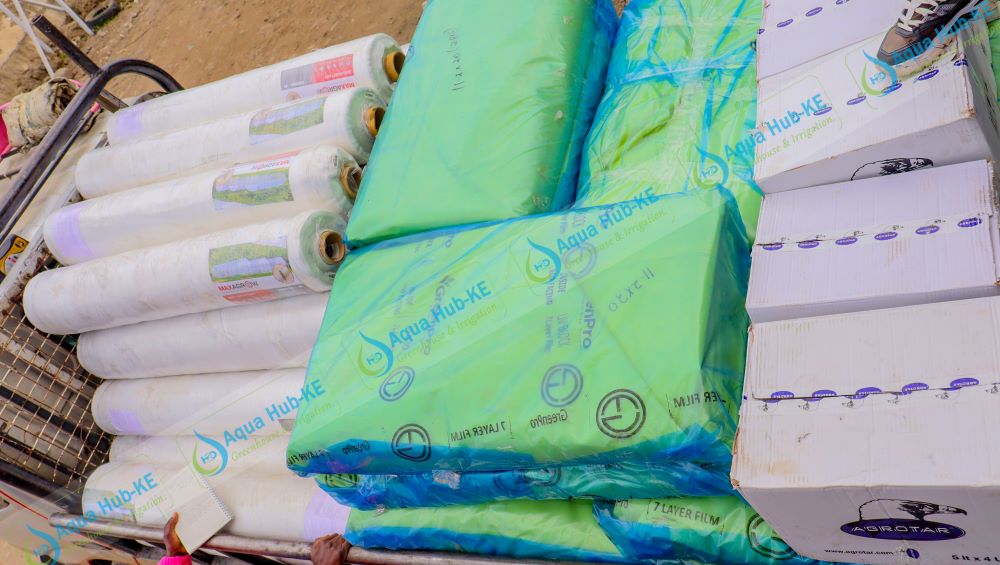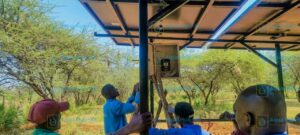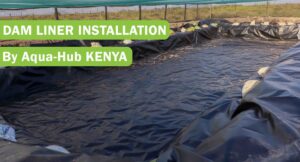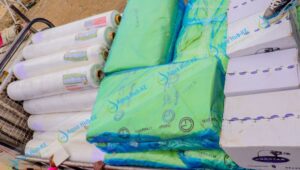With greenhouse farming now popular and profitable venture in Kenya, greenhouse polythene sheets are highly demanded. Buy quality greenhouse polythene sheet at affordable price in Kenya from Aqua Hub LTD. We deliver quality greenhouse materials at market-friendly prices.
Contact us on 0790719020
Why Greenhouse Polythene?
Greenhouse polythene sheet are the popular films for covering greenhouse structures. Here are the reasons why it is preferred.
- Cost-effective: Compared to glass or polycarbonate, polythene is far more affordable, while delivering excellent light transmission and thermal control.
- Flexible and easy to install: It’s lightweight and can be cut or secured to various greenhouse frames, whether wooden or metallic.
- Enhances faster plants growth: It helps regulate temperature, protect crops from harsh weather, pests, and insects, and reduces the need for chemicals.
- Prolongs growing season: In cooler highland regions of Kenya, greenhouse polythene helps retain heat and extend cultivation periods.
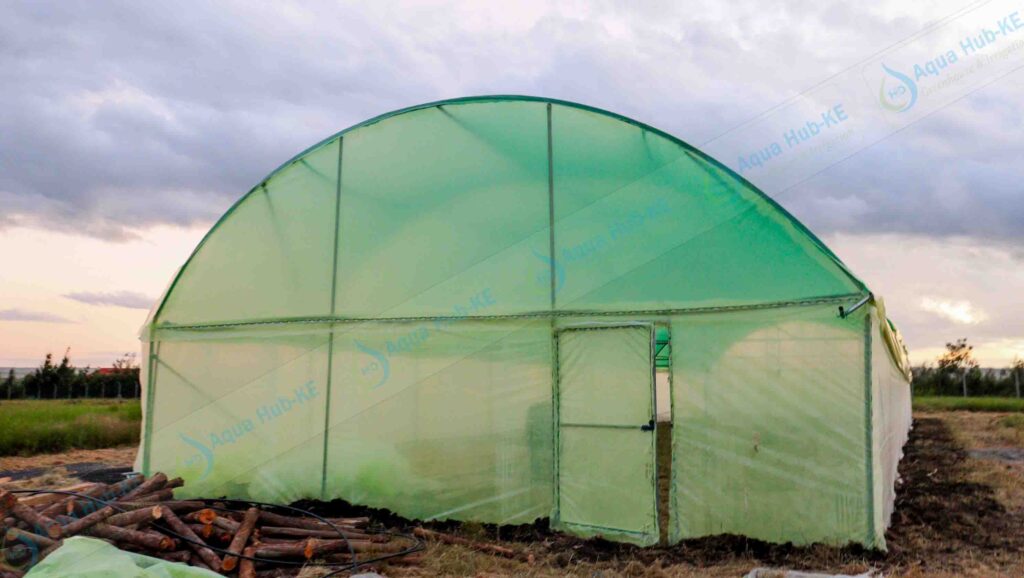
Features of Greenhouse Polythene Material
- Thickness (Microns): Commonly between 150 and 300 microns, with 200 microns being the most widely used.
- UV Stabilization: Treated to resist UV damage, ensuring durability in strong sunlight.
- Color: Milky-white, light-yellow, and clear-white, each offering different diffusion or warming properties.
- Infrared retention and anti-fog/drip: Some films include infrared stabilization, anti-fogging, and anti-drip features to maintain clarity and reduce moisture issues.
- Sizes: Widths from 4 m to 12 m and even up to 14 m; lengths commonly up to 150 m.
- Special layers: High-end options may come with multiple layers (e.g., 7-layer films with antiviral, antifungal, and enhanced heat retention).
Best Greenhouse Polythene Supplier in Kenya
Greenhouse Polythene Sheet from Aqua Hub Kenya are widely used in designing greenhouses in Kenya owing to their top quality. At Aqua Hub LTD, we deliver high end greenhouses covered using our UV treated Polythene sheets.
Call 0790719020 for orders.
Cost of Greenhouse Polythene in Kenya
The cost of greenhouse polythene sheet is between KES 110 per square meter for standard UV treated polythene.
Types of Greenhouse Sheets in Kenya
Kenyan farmers typically choose from three main types:
- Clear / Milky / Nectarine: Ideal for high-altitude or cooler climates. These films offer slightly higher warmth retention at night suitable for tomatoes, peppers, and other vegetables.
- Yellow Green: Especially good in colder zones, excellent anti-fog and anti-drip properties. Popular for flowers such as cucumbers and colorful crops.
- Standard Clear / Transparent: Offers maximum light transmission where high light is necessary.
Some films add special features like multiple layers, antifungal/antiviral film, or IR heat-retentive coatings for enhanced performance.
Factors to Consider When Choosing Greenhouse Polythene
Choosing the right polythene cover entails careful thought:
- UV and IR properties: For longevity and climate control.
- Thickness: Thicker films (above 200 microns) cost more but last longer and offer better durability.
- Light transmission: Higher in clear films (~88–91%) but varies with material type.
- Crop requirements: Some crops need diffused light or higher warmth retention.
- Weather conditions: Areas with strong sunlight or wind need UV-stabilized, tear-resistant films.
- Supplier reliability: Established suppliers like Aqua Hub often offer better warranties and customer support.
- Longevity vs cost: Investing in higher-quality films may reduce long-term replacement costs.
Greenhouse Construction Using Greenhouse Polythene
Here’s a step‑by‑step overview of using greenhouse polythene in construction:
- Site Selection & Soil Testing: Choose a suitable, well-drained site; test soil before building.
- Structure Setup: Build a frame (metal or wood) using materials available from suppliers like Aqua Hub.
- Polythene installation: Use 200 µm UV-treated polythene.
- Stretch it tightly over the structure to avoid sagging.
- Add roll‑up sides or netting for ventilation.
- Final Checks: Ensure proper tension, secure fastenings, and test irrigation before planting.
Advantages of Our Greenhouse Polythene Sheets
- Suitable for all weather conditions: they are made from new UV treated polythene materials.
- Better insulation properties: ideal for enhancing hot temperature for optimal cultivation inside the greenhouse.
- Flexible nature enhances ease of installation: the flexibility of our greenhouse polyethylene sheet makes it very easy to wrap around the structure.
- Low weight: for proper stability of the structure.
- Tensile strength: makes it resistant to wind damage, tear or wear from stretches.
- Smooth and waterproof surface: for preventing dust or water from accumulating on the sheet. Dust and moisture can affect light penetration.
How to Maintain Greenhouse Polythene
Proper maintenance practices can extend the lifespan of your greenhouse cover:
- Regular cleaning: Use mild soap or greenhouse-safe cleaners to remove dust, algae, and debris that reduce light entry.
- Prompt repairs: Fix punctures using greenhouse repair tape.
- Maintain tension: Polythene may loosen over time; re-tension to prevent flapping damage.
- Inspect fastenings: Replace any damaged connectors or locking profiles.
- Manage vegetation: Trim overhanging branches to prevent abrasion.
- Ventilation care: Ensure airflow to reduce heat buildup that can degrade the film.
Are Polythene Sheets Best for Greenhouse Farming?
Of course, greenhouse polythene sheet is reliable for use in greenhouse crop production due to:
- Affordability and availability in the Kenyan market.
- Efficient temperature regulation and pest protection.
- Excellent light diffusion properties.
- Ease of installation and maintenance
- Reliability for small-scale to large scale production.
- Convenient to replace and lower cost compared to polycarbonate.
How Durable Are Greenhouse Polythene Materials?
Typical lifespans in Kenya range from 3 to 5 years, based on quality and maintenance.


